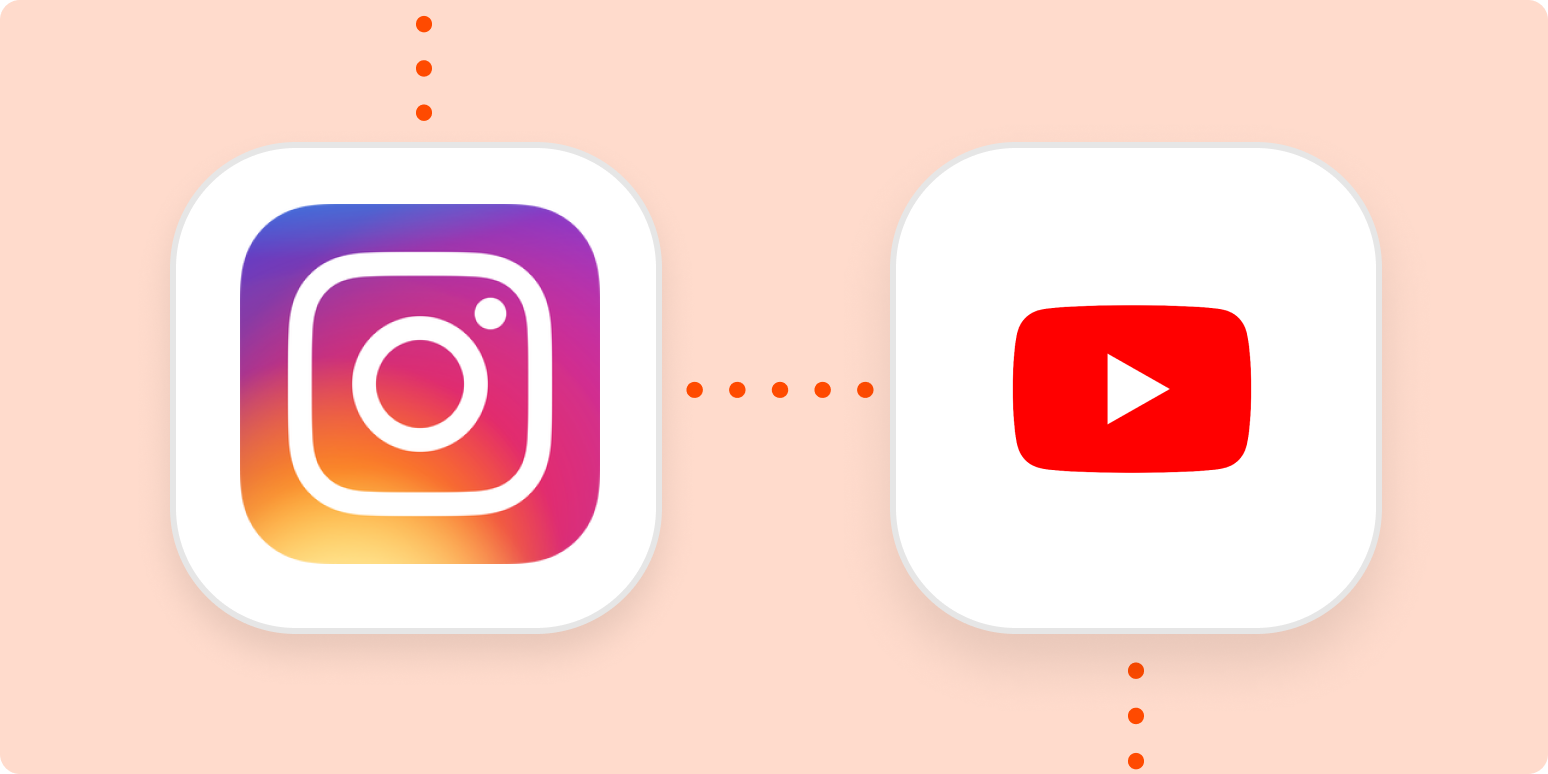One of the best ways to connect with your customers is to leverage social media, and video content has become an incredibly popular way to do that.
YouTube, a long-form video platform owned and operated by Google, has over 850 million monthly active users (MAUs) and is most popular with a slightly older audience, with ages ranging from 25 to 45. Instagram, a photo and short-form video-sharing app owned and operated by Meta, has over 1 billion MAUs and is most popular with people between 18 and 34 years old.
If you’re focusing primarily on one channel, but want to ensure your message is seen on the other, you can increase your reach by sharing videos on YouTube and Instagram. But since YouTube and Instagram are owned by different companies, there isn’t a setting you can choose or a button to press that will automatically crosspost your videos from one app to the other.
Fortunately, Zapier provides an easy way to automatically share videos between platforms, without you having to lift a finger.
You’ll need a Zapier account to use the workflows in this piece. If you don’t have an account yet, it’s free to get started.
Here are two different ways you can use automation with Zapier to save time with Instagram and YouTube.
-
Upload Instagram videos to YouTube
-
Add YouTube videos as post to Instagram
Before you begin
Before you start creating a Zap—what we call our automated workflows—with Instagram and YouTube, you’ll need to check each app to ensure that you have the right permissions.
-
YouTube: You’ll need admin access to the YouTube account you’re connecting.
-
Instagram: You’ll need admin access to the Instagram account you’re connecting. If you’re using Instagram for Business, you’ll need access to your business Instagram account.

To enhance the connection between Instagram and YouTube, there are a few additional things you can do. The most useful is to create a few hashtags for videos and use them on both apps. This will help users more easily find your content between platforms. Additionally, try adding a link to your Instagram page in your YouTube channel information, and adding a link to your YouTube channel in your Instagram bio. This will provide your customers a quick way to jump between apps.
Upload Instagram videos to YouTube
Sharing videos you upload to Instagram directly to YouTube is very simple. Always select Media URL for the Video field to properly populate your media. As for determining the rest of the fields from Instagram to use for your YouTube videos, it depends on how you typically format your Instagram posts.
If you normally write short, descriptive captions, then we recommend using the caption field from Instagram as the title of your YouTube video. Then, you can either use the caption field again as the description of your video, or use the permalink field to link back to the video on Instagram.
If you normally write long captions with lots of hashtags on Instagram, then we recommend creating a string for your YouTube title consisting of the username and timestamp fields. For example, “Username’s Timestamp Video,” when populated would appear as “SallyCo’s 2021-12-31T11:00:00 Video.”
When setting up your Zap, when you get to the YouTube step, you’ll want to bring the information from Instagram forward. To do this, you’ll select the information from Instagram, like below, for the username. Repeat for the timestamp or any other information you want to pull into YouTube from Instagram.

Check out Zapier’s Formatter for a tutorial on how to format the timestamp in a more readable way. If you want to get extra fancy, you could also use the Formatter to pull text out of the caption and use it as a title.
Add YouTube videos as posts to Instagram
YouTube videos are typically long-form and horizontally-oriented. While this works great on YouTube, it doesn’t translate well to Instagram directly. Fortunately, you can still connect your YouTube to Instagram automatically, but instead of directly posting your YouTube video to Instagram, you can share your high-resolution thumbnail as a post on Instagram, letting your followers know there’s new content.
Please note that this Zap requires an Instagram for Business account.
For the actual photo to be posted, we recommend using the Thumbnails High URL field from YouTube to get the best possible resolution for your photo. To customize your Instagram post, we recommend using the Description field from YouTube as the Instagram caption, while also adding the YouTube URL field so users have a direct link to your YouTube video.
Automate your social posting
No matter what your video marketing strategy is, YouTube and Instagram are the perfect platforms for your content, and Zapier can help you automate your posting—saving you time, and money.
Explore other ways you can connect YouTube and Instagram, or create a Zap from scratch.
New to Zapier? It’s a tool that helps anyone connect apps and automate workflows—without any complicated code. Sign up for free.
[adsanity_group align=’alignnone’ num_ads=1 num_columns=1 group_ids=’15192′]
Need Any Technology Assistance? Call Pursho @ 0731-6725516







